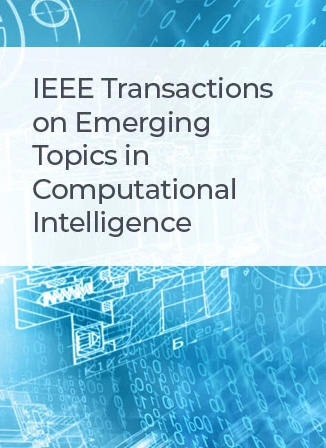The Segmentation Method of Road Surface Covering Objects Based on CBAM UNET++
IF 5.3
3区 计算机科学
Q1 COMPUTER SCIENCE, ARTIFICIAL INTELLIGENCE
IEEE Transactions on Emerging Topics in Computational Intelligence
Pub Date : 2024-10-17
DOI:10.1109/TETCI.2024.3462854
引用次数: 0
Abstract
Dangerous road surface covering objects such as wet slippery, ice and snow will directly affect the safety performance. Therefore, the detection and visualization of road surface covering objects' status under complex weather and road conditions are of great significance to the safety of human driving and unmanned driving. However, the complex road conditions (vehicles and pedestrians blocking the road surface, the area of the measured coverage is small, and the ambient light changes drastically) limit the accuracy of road surface coverage objects' state detection in the natural environment. Given the above problems, this paper reconstructs the image prepossessing process in road ice and snow cover segmentation by introducing background extraction before image segmentation, and then proposes a road surface coverage objects segmentation method based on Convolutional Block Attention Module UNet++ (CBAM UNet++). First, through the performance comparison of different background extraction algorithms, the Content-adaptive Resizing Framework (CARF) background extraction algorithm is used to eliminate the interference of vehicles, pedestrians and other objects in complex road conditions. Then, the CBAM UNet++ model is established to segment the four types of road surface coverings objects in the outfield to improve detection accuracy under conditions of small area coverage objects and severe illumination changes. Experimental results indicate, after introducing background extraction, the segmentation accuracy under different lighting conditions can be improved by 5.6%--17.7%; Compared with traditional methods for segmenting objects on road surfaces, the CBAM UNet++ method demonstrates an average segmentation accuracy improvement of at least 6.5% under six different lighting conditions.基于CBAM UNET++的路面覆盖物分割方法
危险路面覆盖湿滑、冰雪等物体会直接影响安全性能。因此,复杂天气和路况下路面覆盖物状态的检测和可视化对人类驾驶和无人驾驶的安全具有重要意义。然而,复杂的道路条件(车辆和行人遮挡路面,测量覆盖面积小,环境光变化剧烈)限制了自然环境中路面覆盖物体状态检测的准确性。针对上述问题,本文通过在图像分割前引入背景提取,重构了道路冰雪覆盖物分割中的图像预处理过程,提出了一种基于卷积块关注模块un++ (CBAM un++)的路面覆盖物分割方法。首先,通过不同背景提取算法的性能比较,采用内容自适应调整大小框架(CARF)背景提取算法消除复杂路况下车辆、行人等物体的干扰。然后,建立CBAM UNet++模型,对外场四类路面覆盖物进行分割,提高覆盖物面积小、光照变化剧烈条件下的检测精度。实验结果表明,引入背景提取后,不同光照条件下的分割精度可提高5.6% ~ 17.7%;与传统的路面物体分割方法相比,CBAM UNet++方法在6种不同光照条件下的平均分割精度提高了至少6.5%。
本文章由计算机程序翻译,如有差异,请以英文原文为准。
求助全文
约1分钟内获得全文
求助全文
来源期刊

IEEE Transactions on Emerging Topics in Computational Intelligence
Mathematics-Control and Optimization
CiteScore
10.30
自引率
7.50%
发文量
147
期刊介绍:
The IEEE Transactions on Emerging Topics in Computational Intelligence (TETCI) publishes original articles on emerging aspects of computational intelligence, including theory, applications, and surveys.
TETCI is an electronics only publication. TETCI publishes six issues per year.
Authors are encouraged to submit manuscripts in any emerging topic in computational intelligence, especially nature-inspired computing topics not covered by other IEEE Computational Intelligence Society journals. A few such illustrative examples are glial cell networks, computational neuroscience, Brain Computer Interface, ambient intelligence, non-fuzzy computing with words, artificial life, cultural learning, artificial endocrine networks, social reasoning, artificial hormone networks, computational intelligence for the IoT and Smart-X technologies.
 求助内容:
求助内容: 应助结果提醒方式:
应助结果提醒方式:


